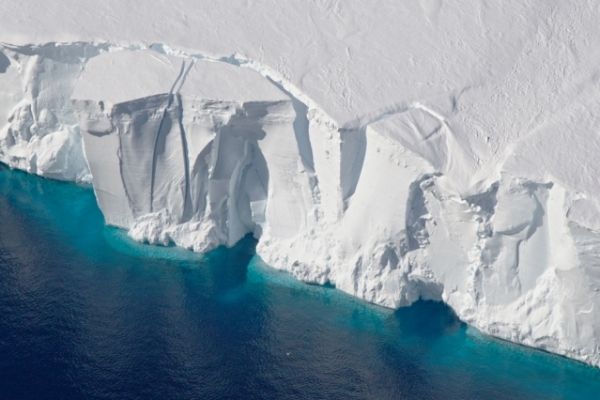Antarctica’s ice sheet spans close to twice the area of the contiguous United States, and its land boundary is buttressed by massive, floating ice shelves extending hundreds of miles out over the frigid waters of the Southern Ocean. When these ice shelves collapse into the ocean, they expose towering cliffs of ice along Antarctica’s edge.
Scientists have assumed that ice cliffs taller than 90 meters (about the height of the Statue of Liberty) would rapidly collapse under their own weight, contributing to more than 6 feet of sea-level rise by the end of the century — enough to completely flood Boston and other coastal cities. But now MIT researchers have found that this particular prediction may be overestimated.
In a paper published today in Geophysical Research Letters, the team reports that in order for a 90-meter ice cliff to collapse entirely, the ice shelves supporting the cliff would have to break apart extremely quickly, within a matter of hours — a rate of ice loss that has not been observed in the modern record.
“Ice shelves are about a kilometer thick, and some are the size of Texas,” says MIT graduate student Fiona Clerc. “To get into catastrophic failures of really tall ice cliffs, you would have to remove these ice shelves within hours, which seems unlikely no matter what the climate-change scenario.”
Continue reading at Massachusetts Institute of Technology
Image via Massachusetts Institute of Technology


